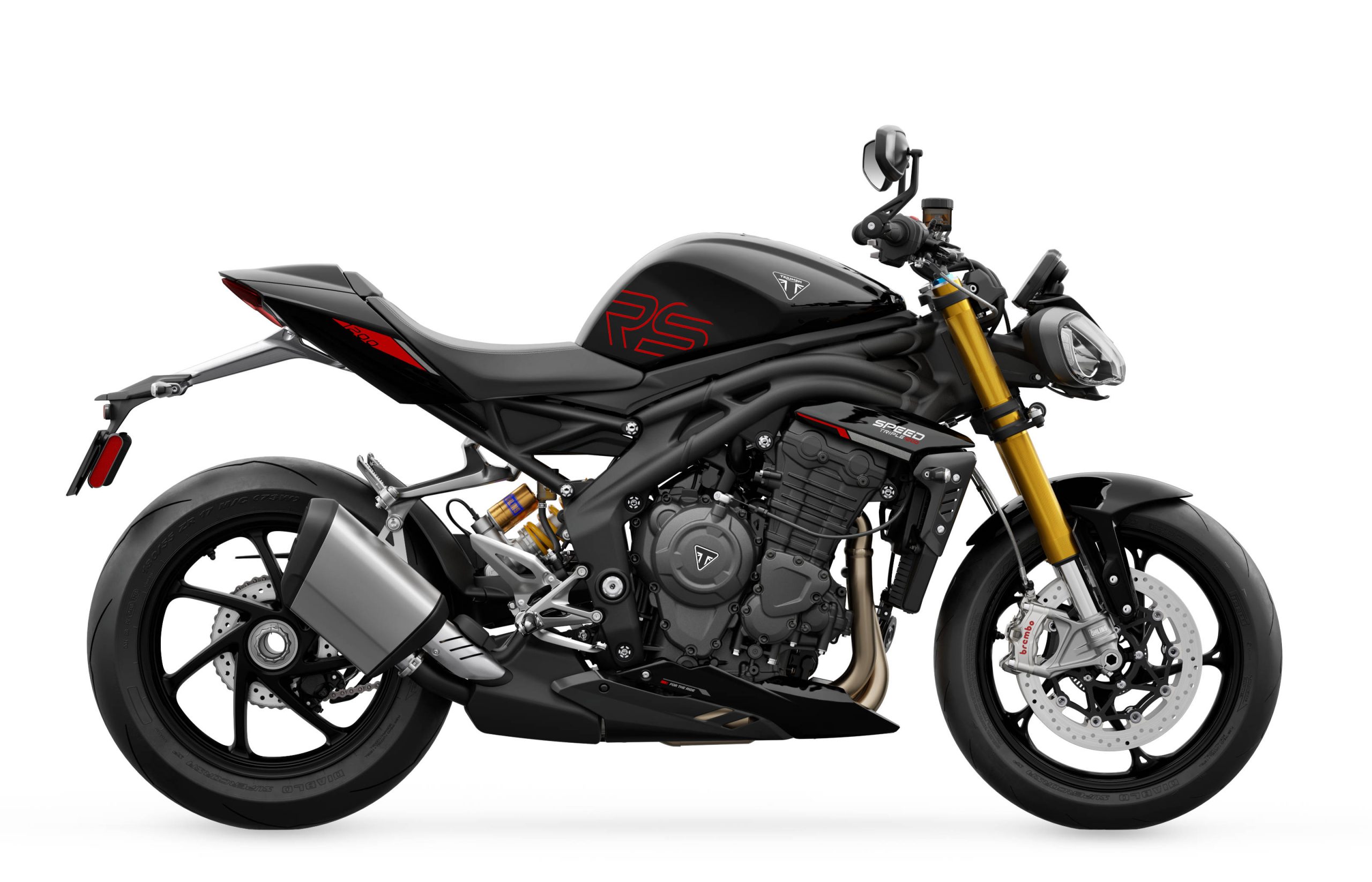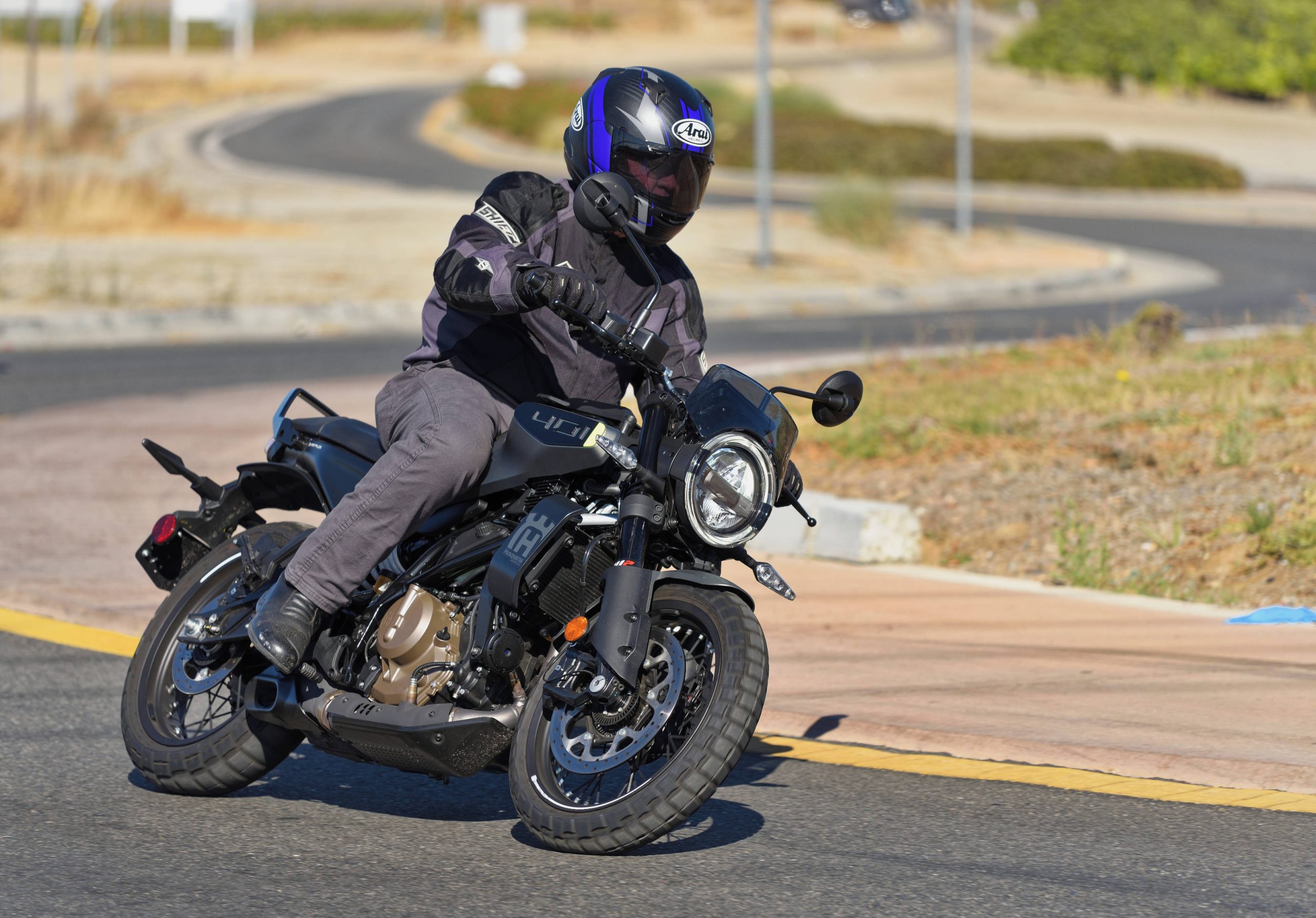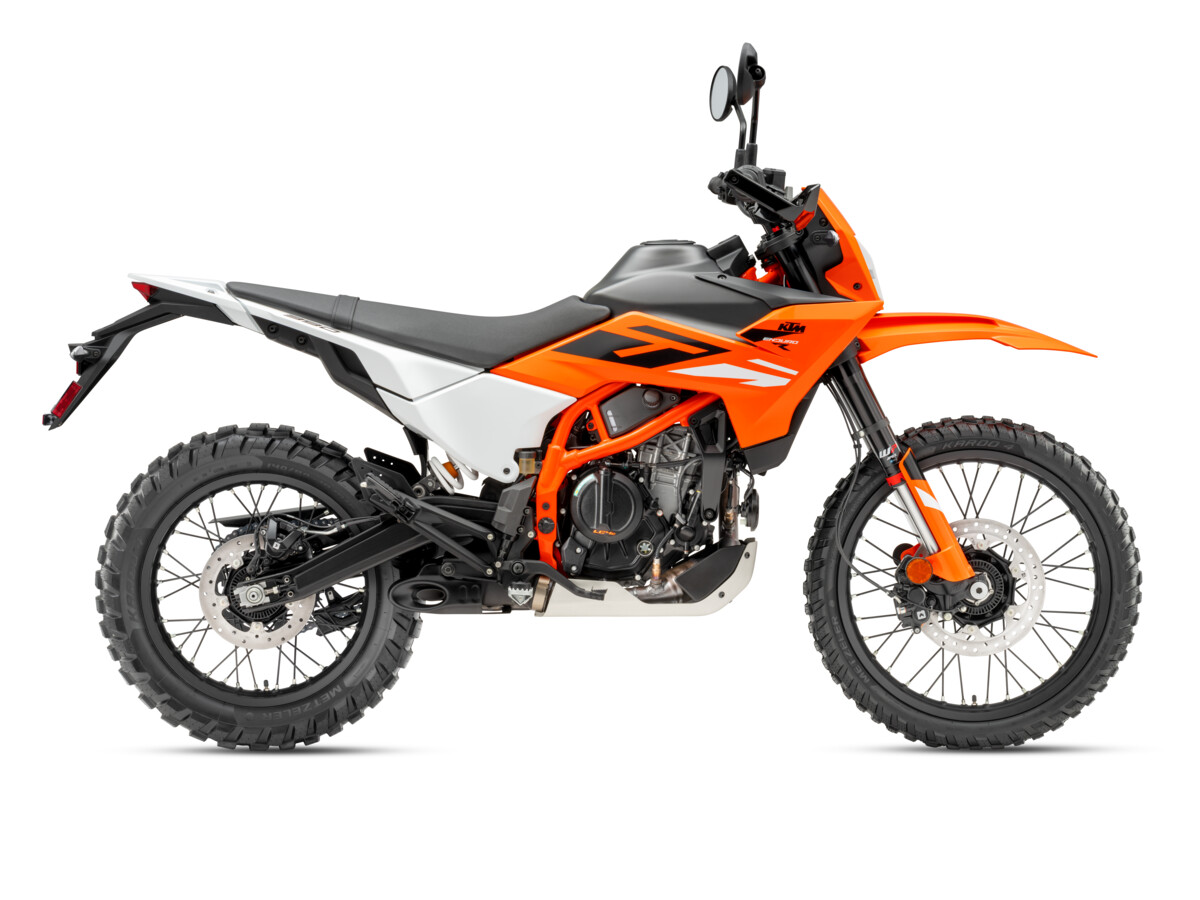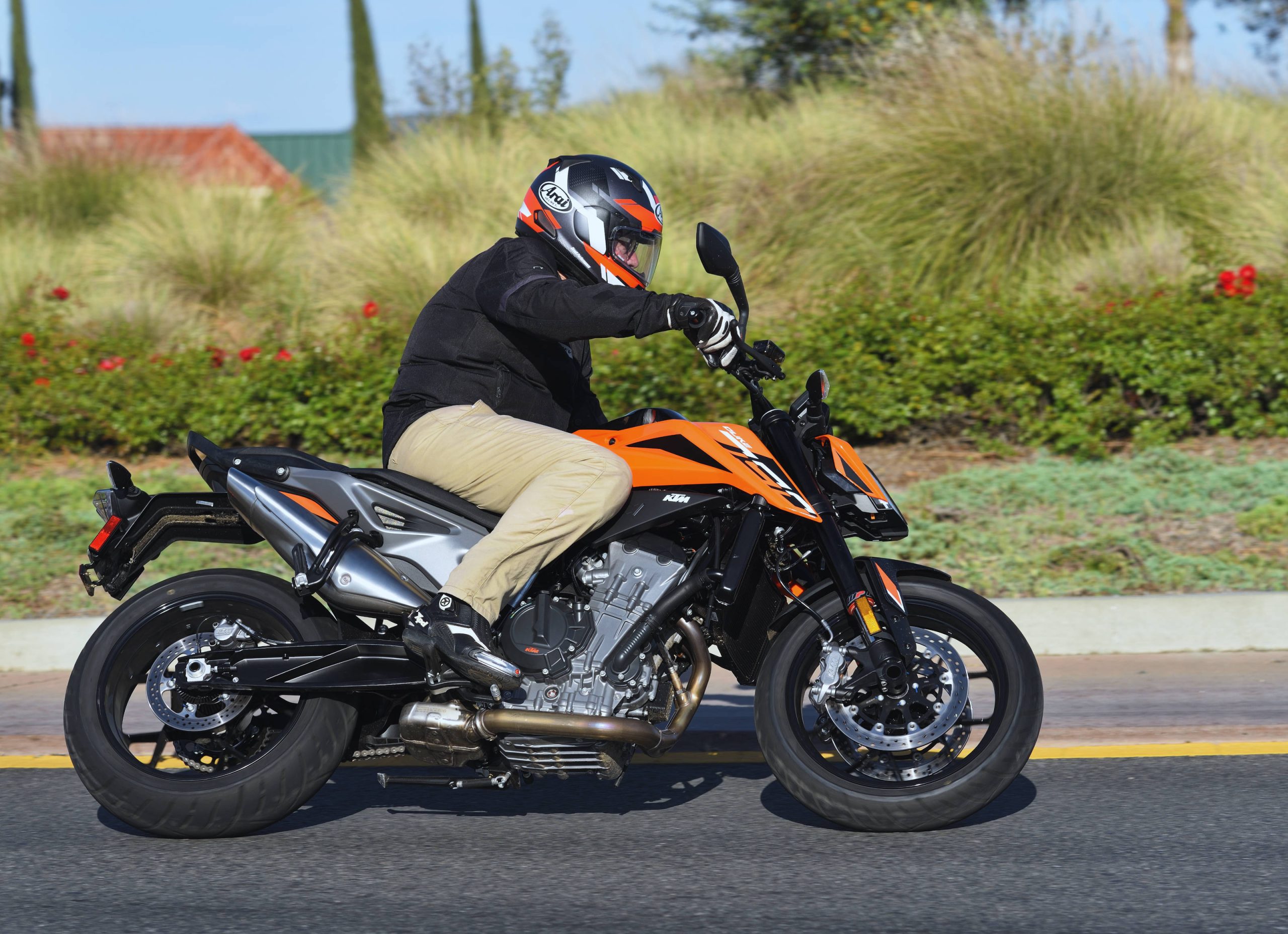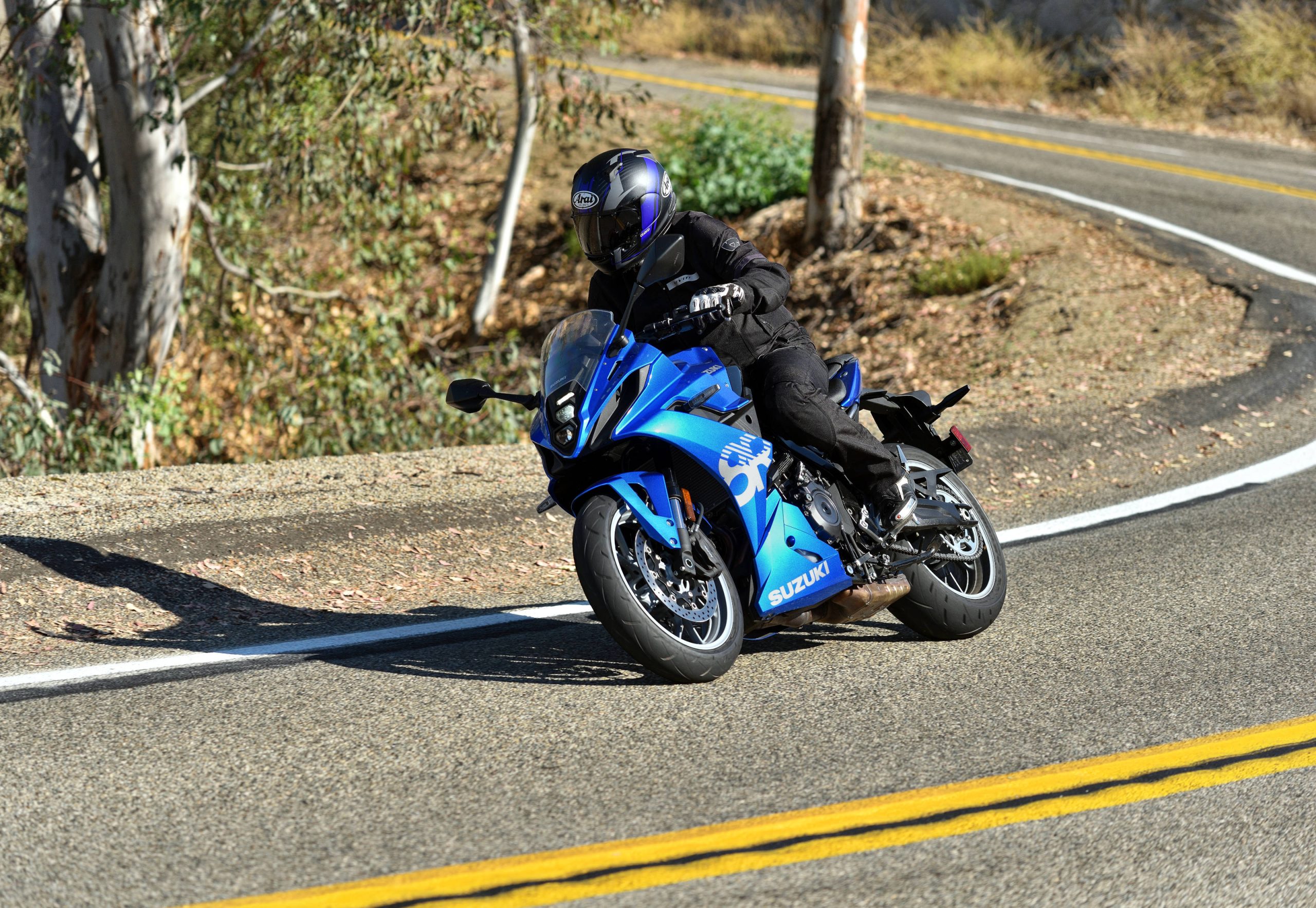With Jeremy McWilliams

Ducati waited a full year to homologate their new race bike. That’s the time it took to get the World Superbike regulations changed from litre twins to a full 1200cc. The Ducati 1098R is in fact a 1200, and to control that mammoth torque Ducati has treated us to the world’s first production adjustable traction control.
For a simple man like me, Ducati Traction Control (“DTC”) means nothing. So for the good of everyone, we assigned MotoGP star Jeremy McWilliams to test this remarkable WSB homologation special at Jerez. Even against a slick-shod Michel Fabrizio, who now rides for the Xerox Ducati WSB team alongside Troy Bayliss, McWill showed his competitive spirit and left everyone for dead at Jerez. And that was on standard Pirelli Corsa Pros mind . . . we can’t stop being amazed at the 43 year old from Belfast and here are his impressions:
Ducati introduced the new bike with a laid back informality. We were treated to an informative technical talk from Andrea Forni explaining the innovative goodies that Ducati has added to what is the very top of the 1098 range.
This motor is bored and stroked to 1198cc, and its roots are pure racing. With only minor differences, it runs the same motor (more closely related than any of the R model road bikes have been before) as its brother in WSB. Crankcases, titanium con-rods and rocker arms are all the same. Differences in the race bike include slightly lighter pistons, flywheel and crankshaft. The gearbox internal ratios are different for obvious reasons.

The 1098R has a massive weight saving over its predecessors, 16kg lighter than the 998R and 6kg slimmer than the 1098! The motor (2.2kg lighter alone) uses carbon belt covers, and sand-cast crankcases. The remainder of the weight saving over the 1098’s motor is in the titanium rods, crankshaft and valves. The R uses a single seat, an alloy sub frame support (rather than steel) and Titanium silencers.
Compared to the standard 1098, the R features increased compression (12.8 to 1 vs. 12.5 to 1) and larger valves.
Suspension is top notch Ohlins, with the rear using the very latest TTX36 unit. I could blind you with science about this piece of kit but in a ‘large’ nut shell this is current race spec. TT refers to the twin tubes it runs piggy back . . . with compression and rebound shims in each. The main difference from conventional units is that the pistons in the main body don’t have valves. Oil pressures (damping) are controlled within the twin tubes separately. In conventional units a change in compression would have a small effect on rebound, while TTX units control each independently. When the unit needs servicing or its shim stacks altered for rebound and compression changes, this can be done much faster than stripping out the complete unit, which now has an internal pressure of only 6 bar compared to 12 bar in the past. Less oil means less chance of air pockets forming and thus less chance of cavitation.
For my mass, all 70kgs (154 lbs.), front and rear suspension only needed minor tweaks, slightly more support on the front for the very hard braking areas required an additional 1 full turn of preload. The rear needed more preload and a click or two of compression to help hold a line when that big torque pulse arrives on the exit. The standard setting provided by Ducati at Jerez was pretty plush. The Chassis feels similar to previous models at this level . . . a little front heavy, which means it needs to be taken by the horns much like Troy rides his. It works best when you brake late, fire it on its side and get it onto the fat of the tyre. It needs to be steered with commitment, but it’s fun when it does so little wrong anywhere else.

The 1098R comes with a race kit filled with goodies (ECU and Carbon tailpipes) The ECU provides the adjustable DTC (Ducati traction control) and this is the same system used on both Troy’s superbike and Casey’s GP bike. Trick! There are 8 levels, with 8 being the most intrusive. You would rarely use this unless riding on ice. We started with the system on level 4.
To make the bike spin more and cut ignition less I moved the DTC setting from 4 to 2. The levels are easily adjusted on the digital dashboard when the bike is stationary — easy to use and I could feel the benefit. I thought the DTC was awesome. If you start on level 4 and crack the throttle mid-corner, you get an instant response from the ECU. The torque decreases and cuts drive a bit (like in your rear wheeled 530i Beemer, only much more subtly). It’s easily audible with a slight misfire as the spark cuts. The system is able to compare wheel spin to the defined target (what the rider wants) so the rider can increase the throttle and request more torque without DTC cutting the ignition further. At the proper setting, DTC lets the bike slide a little further before cutting in again. In Ducati tests, the rider was able to improve lap times by up to 0.6 seconds. I wasn’t able to tell if DTC was letting me lap any faster, but I could feel the benefit if I happened to make a cock up . . . something I’ve been known to do once or twice in the past. I once adjusted my traction control by 2 clicks too much (reducing interference) when lying 5th at the Japanese GP in Suzuka on a KR3. I thought I knew better and that it was interfering too much. I promptly high sided with about 5 laps to go. You either put your faith in this system or ride conventionally.
The traction control is a very nice add on if you’re into track days or just fussy about not lobbing your pride and joy on some wet roundabout. If you take the 1098R into a full race season, then your only crashes are likely to be on the low side or losing the front, which is comforting. The DTC works by comparing front wheel speed to rear and the ECU measures the difference. What amazed me was that I could wheelie the R the length of both straights at Jerez (I could’ve wheelied it to Jerez town centre if they’d let me) and although the front wheel would stop, the DTC didn’t kick in. Ducati didn’t elaborate on how this works, but it’s very clever, eh?
If Carlsberg made slipper clutches, this one would probably be the best. Can you imagine backing 3 gears without using the clutch at 10,500rpm? 5th to 2nd as fast as I could change? No over rev and no locking up, just enough engine braking to slow and load the front-pretty much perfectly.

As the day went on, confidence, track knowledge and the fact that Ducati had brought Michel Fabrizio along (Troy couldn’t make it after his altercation at Philip Island), had me asking one of the Ducati mechanics what a decent time on Pirelli Super Corsas would be. I hadn’t gone to Jerez thinking about times, but when Michel rolled out on Pirelli slicks and I had treaded Corsas and an on-board camera, it was time to find out. I followed for about 3 laps and then he noticed me in his mirrors (difficult on a 1098 when you’re spending most of the lap tucked in). He let me pass and I led him for another 3 laps, then let him pass me. I was thinking about good footage and the fact that a mid 1 min 50 seconds was the target time from the Masterbike (street bike) test — run at Jerez every year. I didn’t get a chance to check times on that run, but 1.49s came easily enough when we got the DTC and the suspension nearer to my preferred settings in a later session.
As with all the Ducatis I’ve ridden, the 1098R has the hallmarks of this marques sport bike family. Love or hate twins, this has got to be the two-wheel equivalent to Audi’s 1,500ft/lb Le Mans winning Diesel — it pulls from nothing, literally. It takes time to adjust to a bike that makes 140ft/lb and 180hp. I kept getting caught out. Before I had time to think about changing gear, the limiter cut in and all of a sudden warp speed was halted abruptly. The limiter is designed to save the valves from bouncing off the pistons so it needs to be effective, but the R stops in its tracks if you’re not paying attention.

With 12,000 miles between routine servicing the limiter is pretty important here. Before lunch, my riding style and thought processes didn’t take this into account. In the morning, I went out guns blazing and revving the tits off the poor thing. The result of riding this bike like an amateur is slower lap times, as it hates getting beyond 10,500rpm. The first 2 gears are from the current 1098, and my feeling is that they’re a little too short for this motor. 3rd through 6th are longer ratios.
When I finally learned to keep the 1098R between 7,000 and 10,000 rpm, the lap times improved by about 1.5 seconds. Point proven.
Conclusion:
Is there really a better way of spending £24.000? It’s only half a council house.
Plus points
- Absurd amount of grunt.
- Best looking Ducati ever.
- DTC, if you can get the best out of it.
- Controls, layout, dashboard and RPM light sequence pure race bike.
Against
- Gearbox ratios, 1st and 2nd could be longer.
- Price and poor visibility from rear view mirrors.

